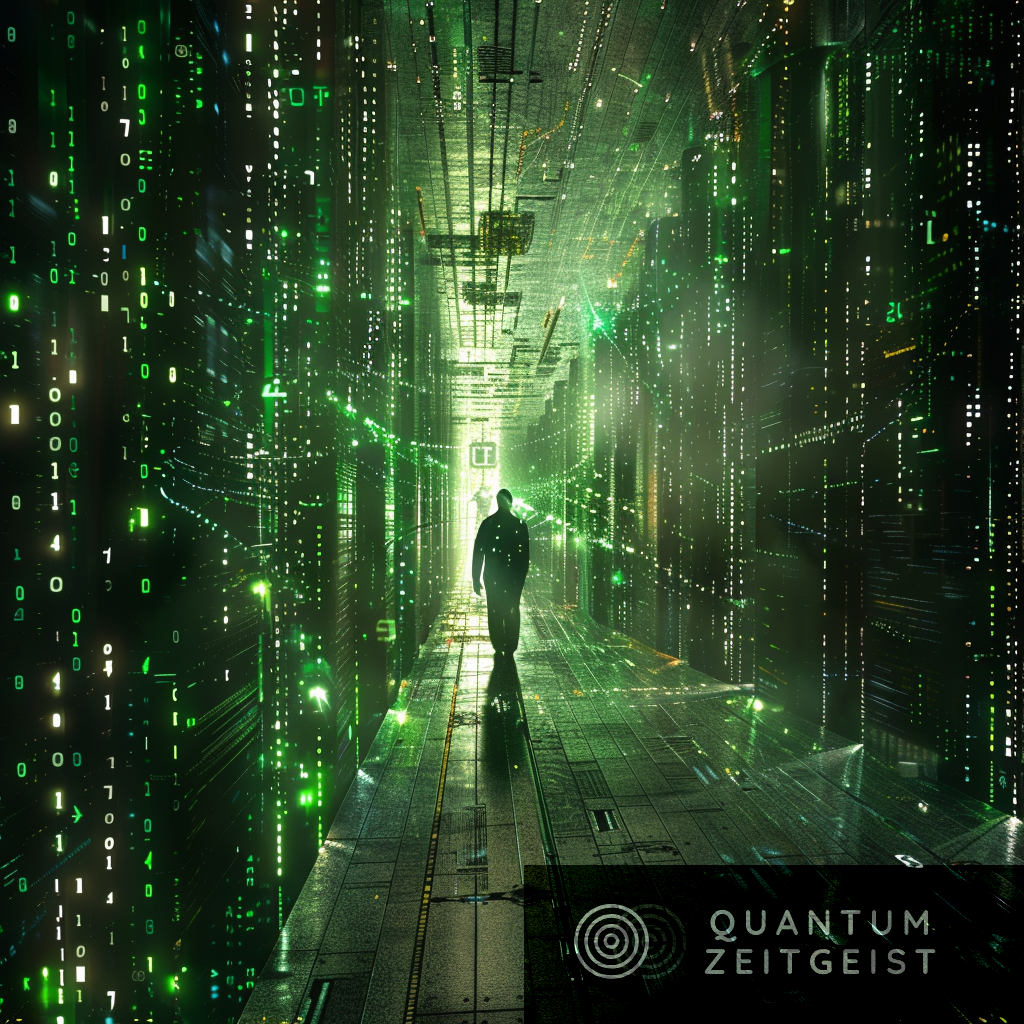“The Matrix” is a groundbreaking science fiction film directed by the Wachowskis, released in 1999. It presents a dystopian future in which reality, as most humans perceive it, is a simulated reality called “the Matrix,” created by sentient machines to subdue the human population. At the same time, their bodies’ heat and electrical activity are used as an energy source. The protagonist, Neo, is awakened to the real world, which lies in ruins and joins a group of rebels fighting against the machines. The film explores reality, freedom, and control themes, incorporating numerous philosophical, religious, and mythological allegories.
The Matrix and Simulation Theory
The Matrix’s concept of a simulated reality closely aligns with the philosophical hypothesis known as simulation theory. This theory suggests that all of reality, including the Earth and the universe, could be an artificial simulation—for example, a computer simulation run by a more advanced civilization. The film brings this abstract concept to a broader audience, vividly depicting what living in a simulated reality might entail.
Simulation theory raises questions about knowledge, existence, and the nature of reality, similar to the philosophical inquiries posed by “The Matrix.” The film and the theory challenge the perception of physical reality, suggesting that our senses and the world we perceive could be entirely fabricated. Do we live in a Simulation?
The film has contributed significantly to popularizing the concept of simulation theory, making it a topic of discussion not only in philosophical circles but also among the general public, scientists, and technologists. It has inspired debates on the nature of reality, consciousness, and humanity’s potential to create its simulated realities one day.
Since the first movie’s release in 1999, there has been an expansion of fictional and topical writings on the nature of our reality, from philosopher Nick Bostrom to comments from Entrepreneur Elon Musk or established scientists questioning whether we live in base reality or simulated reality. For those who want to read more on the subject, try one of the great books written on the subject (4 Simulation Theory Books).
Below are some of the concepts of the Matrix Movie, ranging from Free Choice to control, the nature of reality, The Nature of Humanity, and Artificial Intelligence.
Virtual Reality and Simulation Theory
One of the central premises of “The Matrix” is the existence of a simulated reality so advanced that it is indistinguishable from the real world. This concept parallels virtual reality (VR) technology developments aiming to create immersive digital environments. However, current VR technology is far from achieving the seamless integration depicted in the film. Is it? The latest headsets from Occulus and Apple show how fantastic rendering and the immersive experience can be, perhaps lending more weight to the idea that we could live in a simulation.

Artificial Intelligence and Consciousness
The portrayal of sentient machines in “The Matrix” raises questions about artificial intelligence (AI) and consciousness. Today’s AI systems, such as neural networks and machine learning algorithms, demonstrate impressive problem-solving capabilities but lack self-awareness and consciousness. The scientific understanding of consciousness is still evolving, with theories like the Integrated Information Theory (IIT) attempting to quantify it. The film’s depiction of AI with human-like consciousness is a creative exploration beyond current scientific capabilities and understanding.
The idea also intersects with simulation theory, a hypothesis some philosophers and technologists entertained, suggesting that our reality could be an artificial simulation. While intriguing, this theory remains speculative, with no empirical evidence to support it.
Energy Harvesting from Humans
In the film, machines use humans as an energy source, a concept that, while imaginative, diverges from established science. The human body does produce bioenergy through metabolic processes, but the efficiency and practicality of harvesting this energy on a large scale are not supported by current scientific knowledge. Renewable energy sources like solar, wind, and hydroelectric power offer much more viable and efficient methods of energy production.
Neuro-Interface Technology
“The Matrix” also explores the idea of direct neural interfaces, allowing instantaneous learning and virtual experiences indistinguishable from real ones. While advances in neurotechnology have made significant strides, such as brain-computer interfaces (BCIs) that allow for direct communication between the brain and external devices, the technology is primarily used for medical purposes and rudimentary communication or control tasks. The comprehensive neural interfacing seen in the film remains a futuristic concept. Elon Musk’s Neuralink is one technology that actualizes the idea of connecting the brain and machine.
Are We Living in a Simulation?
Without going into some of the specific arguments (we leave this to the reader). Many technologies have matured or entered our lives since the 1999 Matrix Debut. Each of these could lend credibility to the fact that we are simulated beings at an arbitrary level above base reality, perhaps even 42 levels above base reality.

